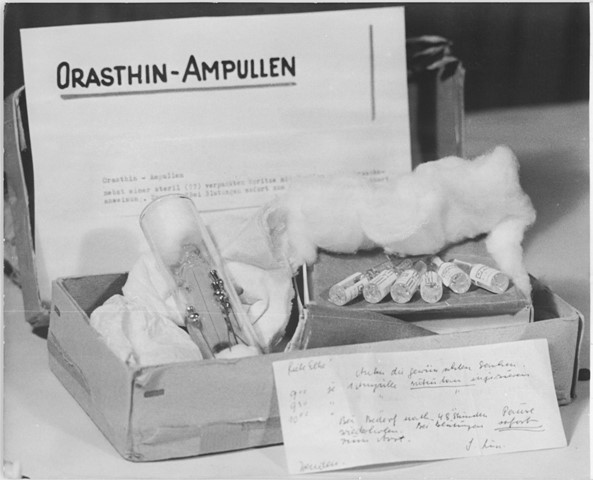Source

Source: Photo: Christa Hochneder / Zentralbild © Bundesarchiv Bild 183-89187-003
Immediately after the end of the war, abortion was legalized in the Soviet occupation zone. The decision was partially attributable to the disastrous economic situation, but also to the numerous rapes committed by Soviet soldiers. In the following years, the abortion rate was extremely high, and SED functionaries began to worry about the future labor supply. In September 1950, less than one year after the founding of the GDR, the “Law on the Protection of Mothers and Children and the Rights of Women” was passed. The law limited abortion to medically-justified cases; all other abortions were subject to prosecution once again. The intention behind the law was to raise the birthrate. What actually happened, however, was that, from that point on, 60% of all abortions were carried out illegally, and thus often posed higher risks to women. This photograph shows vials of Orasthin that were seized by East German customs officials. Orasthin, a medication that induces contractions, was used in abortions. This image, which was distributed by the GDR media agency ADN, stressed the “dangerous consequences” of smuggling medications from West Germany. The caption reads: “Smuggled medication in Christmas packages. A documentation of the inhumanity and the crimes is offered in an exhibition by the Office of Customs and the Control of Goods Traffic, which was opened on December 19, 1961, by press representatives of the Ministry of Health in Berlin. From abortifacients in cigarette packages to Kevadon in candy wrappers, from dangerous antibiotics in cut-up marzipan figures to high-arsenic compounds in lipstick cases – there is a mass of proof showing the extent of the dangers posed to the population of the GDR by the smuggling of medications from West Berlin.”

Source: Photo: Christa Hochneder / Zentralbild © Bundesarchiv Bild 183-89187-003